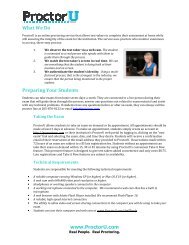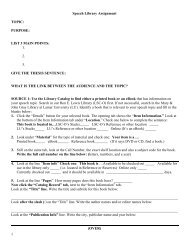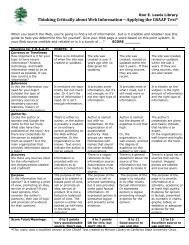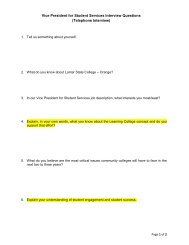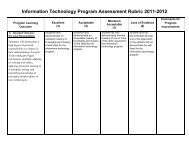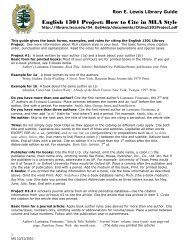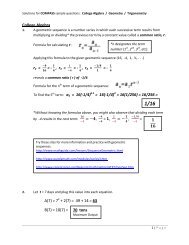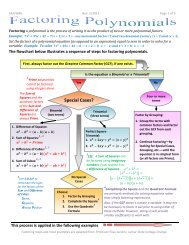Create successful ePaper yourself
Turn your PDF publications into a flip-book with our unique Google optimized e-Paper software.
<strong>Interest</strong> <strong>Problem</strong> LSC-O 6/2010, Rev. 1/2011<br />
Instructions<br />
1. Carefully read the<br />
problem, noting what<br />
numerical data is<br />
given, and what is<br />
being asked.<br />
2. Make a sketch,<br />
drawing, or picture of<br />
the described situation,<br />
and put all the given<br />
data from the problem<br />
on the drawing.<br />
Look for what the<br />
problem’s question is.<br />
In other words, what do<br />
they want to know?<br />
Let x = the amount put<br />
in the savings account.<br />
Example<br />
A high school student invested<br />
$2000 of summer income to save<br />
for college. A portion was<br />
deposited in a savings account<br />
that earned only 4%. The rest was<br />
invested in a local electrical utility<br />
and earned 8%. The total income<br />
for one year was $136. How much<br />
did the student put in the savings<br />
account?<br />
4%<br />
Savings<br />
Account<br />
Total Investment<br />
$2000<br />
8%<br />
Utility<br />
Investment<br />
$136<br />
I<br />
Total Income after 1 yr.<br />
Write down any numerical<br />
relationships that the<br />
problem gives you. In this<br />
case, one pile of cash<br />
earns 4% interest and the<br />
other earns 8% interest.<br />
X = amt. put in savings account, so<br />
2000-X = amt. invested in utility.<br />
X earns 4% interest, while<br />
2000-X earns 8% interest.<br />
Total earnings is $136.<br />
Page 1 of 2
<strong>Interest</strong> <strong>Problem</strong> LSC-O 6/2010, Rev. 1/2011<br />
3. Look for other<br />
information (numbers,<br />
formulas, etc.) that you<br />
can use to relate all the<br />
items.<br />
<strong>Interest</strong> Earned =<br />
Principal • <strong>Interest</strong> Rate • Time<br />
I = Prt<br />
(“Principal” is the amount invested.)<br />
4. Use that formula, along<br />
with the given values<br />
and unknowns, to write<br />
an equation for the<br />
total interest earned.<br />
*Note that you will use<br />
the I=Ptr formula twice<br />
since you have two<br />
principal amounts and<br />
two interest rates.<br />
The total interest income ($136)<br />
equals the interest earned from the<br />
savings account plus the earnings<br />
from the utility investment.<br />
I total = I savings + I utility<br />
Remember: Always use the decimal<br />
equivalents of interest rate<br />
percentages! Also, when time (t) is<br />
1 year, as in this problem, you do<br />
not need to write it in the equation.<br />
I savings = 0.04x and<br />
I utility = 0.08(200 – x), so<br />
136 = 0.04x<br />
+ 0.08(2000 − x)<br />
5. Solve for x:<br />
136 = 0 .04 x + 0.08 (2000 − x )<br />
Distribute 0.08 within<br />
136 = 0 .04 x + 160 − 0.08 x<br />
the parentheses; then,<br />
136 − 160 = − 0.04 x + 160 − 160<br />
combine like terms and<br />
− 24 = − 0.04 x<br />
isolate X on one side of<br />
x = 600<br />
the equation. Finally,<br />
divide both sides by<br />
−0.04.<br />
Answer: X = 600, so the student put $600 into the savings<br />
account.<br />
Can you determine how much the student invested in the utility?<br />
How much interest did the student earn on the savings account<br />
alone? On just the utility investment?<br />
Page 2 of 2




